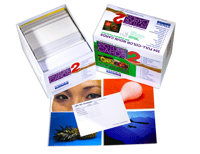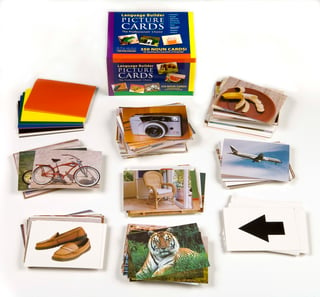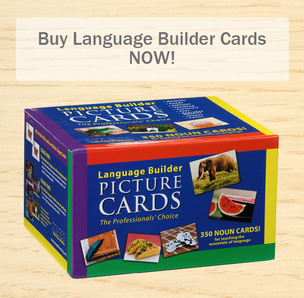Using Picture Flashcards for Language Development for Autistic* Children
Flashcards with real photo images are an essential tool for children with autism to aid them in learning language skills. A common challenge for children and adults with autism is their ability to communicate. Therapists recommend Picture Flash Cards as one of the best tools to aid in communication with individuals with autism, whether the individual is verbal or non-verbal.
 Download FREE Language Builder Noun Cards
Download FREE Language Builder Noun Cards
Many people with autism tend to be visual learners. While some people respond to the spoken word and others to the written word, people on the autism spectrum often learn and communicate best with pictures. For some individuals with autism, pictures are the only way they can let you know what they are thinking.
If your child has no spoken language, you can use pictures to figure out what they want and help them let you know that desire. Here are a few examples:
- Use pictures of foods that your child enjoys, attach magnets to them, and put them on the refrigerator. This way, when your child is hungry, they can go to the refrigerator, and point to the appropriate picture, or even take it off the refrigerator and bring it to you.
- You can use pictures of favorite toys or activities to help your child request what they would like to do. Velcro affixed to the back of the picture and to a board is a good method to carry this out. You can select only the pictures that are an option for your child to put on the board. For example, you may not want to put out the swimming pool picture in the dead of winter!
- Schedule a list of upcoming activities. Using the Velcro idea above, you could put a picture of socks, shoes, pants, shirt, backpack, and school bus on the board to schedule the morning routine.

Stages offers a box of 350 real photo flash cards that work great as a picture aided communication system.
Even if your child has some verbal abilities, just having the cards available to prompt language is a great tool. The more opportunities you provide for your child to communicate the happier you both will be!
As you can tell, we are big proponents of using picture cards to aid communication. Here are some other articles that illustrate different ways to use our picture cards to build different language skills.
Autism and Language Series:
Part 1: Encouraging Emerging Language and Receptive Vocabulary
Part 3:From Basic Vocabulary to Building Sentences
Part 4: Labeling and Requesting

Angela Nelson, J.D., Ed.M.
Angela Nelson is the creator of the widely-recognized Language Builder Picture Card Series, and the creator and lead author for the Language Builder ARIS curriculum. Angela received her BA and JD from UCLA where she studied and practiced behavior psychology under Dr. Ivar Lovaas, and her Ed.M. at the Harvard Graduate School of Education, with a focus on technology innovation and education. As Founder and CEO of Stages Learning Materials, Angela has created autism, special needs and early childhood curriculum products since 1997. In addition to her duties at Stages, Angela writes for multiple industry publications and is Chair of the Education Market Association.





